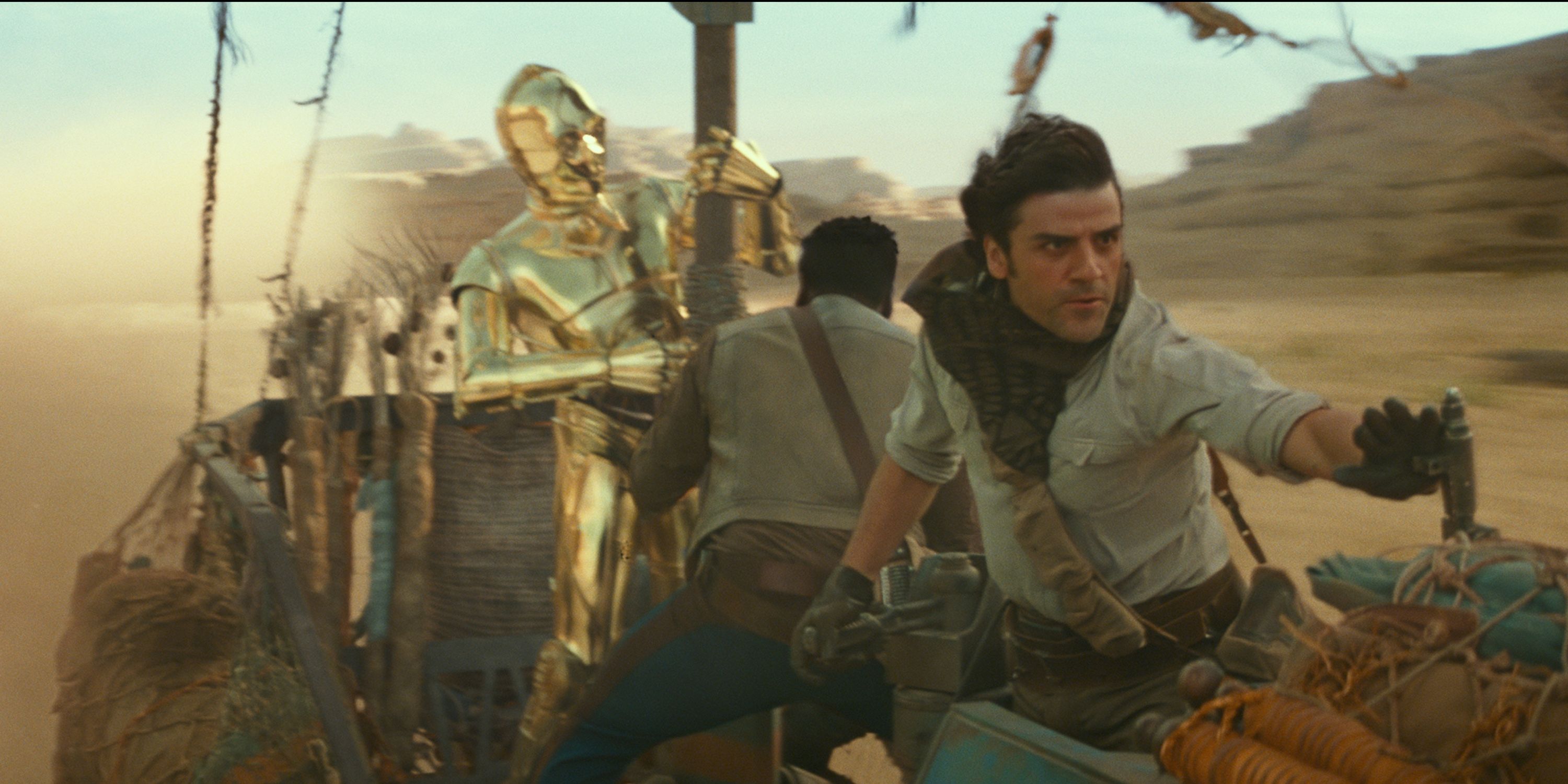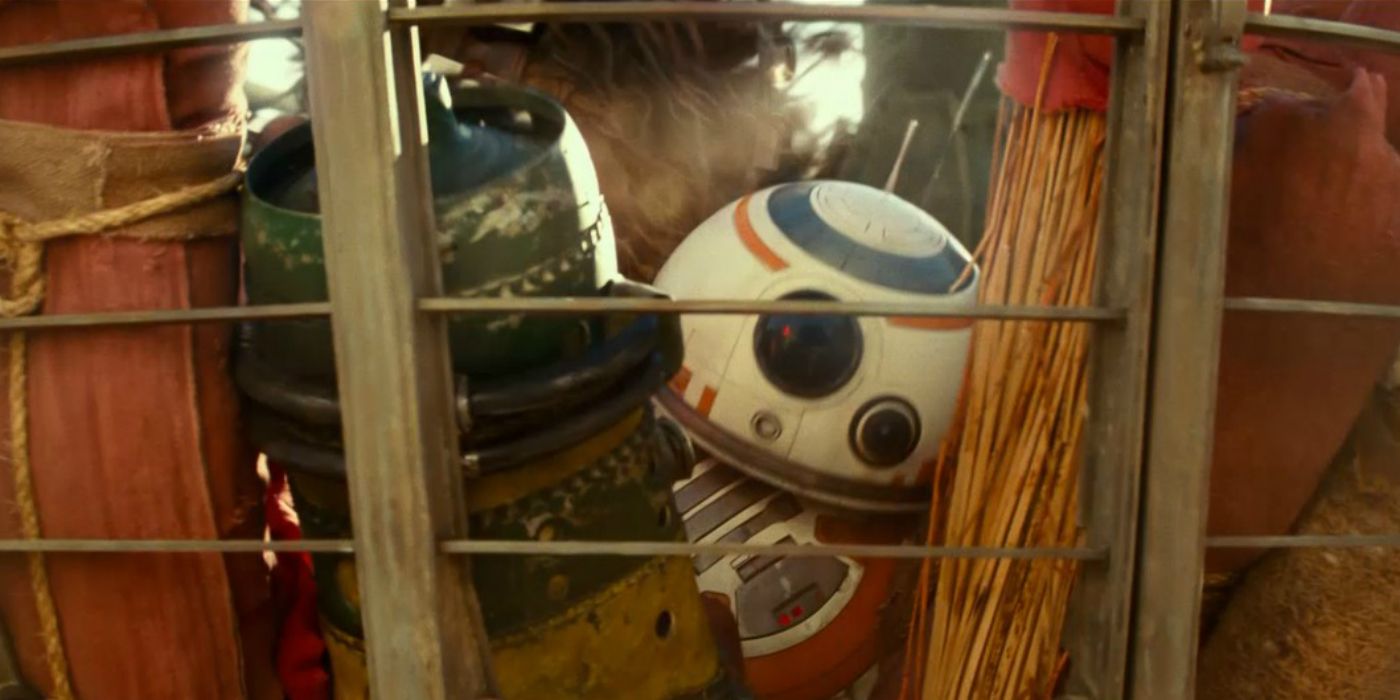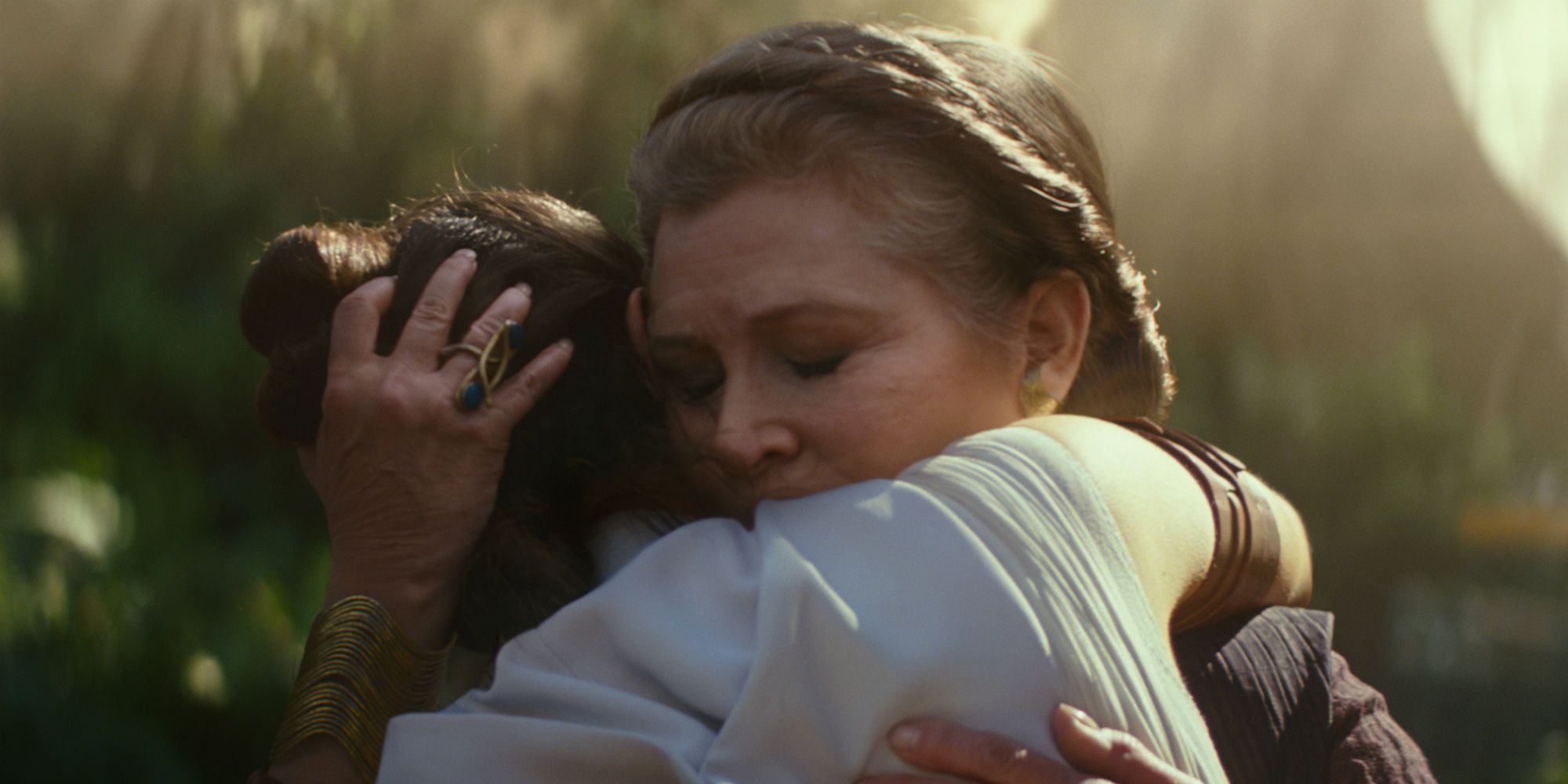Fans may argue amongst themselves which Star Wars film is the best one, or even which trilogy is their favorite, but all nine films are iconic. One of the biggest reasons for their lasting impact is the interplay of visual and practical effects, which work together to create a fantastical new world that’s still grounded in the reality we know. Screen Rant spoke with some of the engineers of the galactic wonderland that is The Rise of Skywalker, discussing the art of speeder chases and young Jedi alike.
Is there a different approach to VFX when you get more grounded projects versus a production like Star Wars, where the entire film is set in a place no one no one's ever seen?
Roger Guyett: I'm gonna take that question and turn it around slightly, because I think that's the interesting thing about Star Wars. We're trying to capture the spirit of your movie; that was very close to J.J.'s heart when he took it up. The spirit of what we're trying to do is, if you think of them going to Tattooine, they didn't make up the place. They went to Tunisia; they went to real places.
So, the DNA to me is that you want to make everything as tactile and tangible as possible, if you're in the spirit of those movies. In the prequels, which I also worked on, the spirit was slightly different and maybe more fantastical. But if you think of the early movies, the DNA of that is if you go to a planet, it probably exists somewhere on Earth, and you are augmenting it in some way.
I totally understand where your question is coming from, but my biggest thought is that what you're trying to do is say to the audience, "Everything that's happening in this movie is really happening." Do you remember when Luke got in the speeder with Obi-wan and they fly across the desert? You know that maybe there's something funny going on there with a mirror or whatever, but the truth is they are traveling across the desert and they're in a machine. It's incredibly tangible. And if you talk about Yoda, it's all there.
Whether or not it's real is a more complicated discussion, but I think the big thought was that if you go somewhere - if you go to a festival in Pasana, we're in Jordan. If you go to Kijimi, we built a set of Kijimi at night. We're not trying to turn this into a visual effects extravaganza in the sense of building all these fantastic places. We're trying to ground this movie, and my joy is the fact that if I said to you, "How much of that desert is real in that speeder chase," What would you say?
I would guess all of it.
Roger Guyett: Yeah, that's right. But it's not. In fact, every background and pretty much 30 or 40% of the shots in that desert speeder chase are completely digital. See, I'm messing with you. Because you believe that's real, and that's what we're trying to achieve.
Patrick and I worked on the prequels, on Episode II and III. I was one of the supervisors on III. When you watch III, it has probably the biggest component of miniatures of any movie ever done in the history of moviemaking. It has the longest-running and most extensive miniature work ever done by ILM. People think it's digital. So, in a way, that movie used imaginary environments because a lot of it was shot on green screen, but with a tremendous practical miniature component. More than anything I'd ever done. I think we had seven or eight units on that movie.
But going back to what we're doing on Episode IX, you want people to believe that whatever is happening visually on the screen is actually happening. And how do you do that? When I asked you the question about the desert, you thankfully gave me the right answer. Because what we're doing is something that I was very proud of: we're creating a space that's so photorealistic, you don't even question it.
And that's the idea. That's what I would love for every element of it. Of course, no one's sitting there in the theater - maybe there's very few people - going, "When they go down and attack the Star Destroyers, they're real." That's a harder sell, isn't it? You know that something's going on, but it's still the spirit of what we're doing.
Neal Scanlan: I think there are ways of doing things. In the way the Millennium Falcon flies, its sense of weight, its change of direction; all of those things are the subtle artistry, hopefully, that grounds it back into the real world. It somehow really observes the laws of physics that we know. And I think when you step beyond that, it just becomes a kind of fantastical animation. And that is something that isn't appropriate in Star Wars, and hopefully we never lose the audience at any time to an exaggerated form of a world that they can't relate to.
I think it applies to all those things. Yes, no one believes that is real, but in the way that the models did in the originals, the motion-control cameras and all those things brought something real. Hopefully that's still the same. It's a very fine line between, I think, holding the audience and losing them.
I'm sure you've gotten a ton of questions about Carrie Fisher, so I just want to touch on that briefly. Can you talk to me about the difficulties of that, especially with the lighting? Because they obviously shot that for Episode VII, yet the lighting has to be exact. What was the process like of bringing her back?
Patrick Tubach: All that work we do set that everybody always says, "Do you really have to shoot all these reference spheres? Do you really have to mark down the position of every light?" Well, thank God we did. That became very important for this. We had all that information still from when we shot Episode VII, so we were able to go back and do that thing we call tech. Which involves figuring out what the camera needs to do and what the lighting of the scene was.
Luckily for us on this film, we were working with the same DP and even some of the same lighting gaffers.
Roger Guyett: Yes, some of the same electricians, weirdly enough. The way we did Carrie was we we took live action elements of her face and put them in the new scenes, and then built a digital Carrie around her. Around that face, because obviously she has new hair, she has new jewelry, she has a new costume. The only way to do that is to build that, because her face and perspective from VII is moving around. We wanted the honesty and the integrity of taking that performance.
Now, as you say, it's lit a certain way from that shot. We would have big discussions, and the planning of this was - even thinking about it starts to gives me hives. But tremendous amount of work went into planning it, because it succeeds or fails in that moment, on that day, when we're shooting that scene.
The chief lighting technician and gaffer go, "Okay, what do you want us to do here?" I want you to light them as though she is lit this way. And they would go, "Oh, my goodness. That's the scene from so-and-so." And these guys are unbelievably good. We'd have reference photographs from those moments because, as Pat said, a lot of those shots are taken from VII. We were all familiar with that world, but of course you're limited.
Because you can't say, "Oh, yeah, I want that line." At the beginning, J.J. was like, "It would be great if she could say that line outside of the base," and I'd be looking at the video, saying, "That's not gonna work." We were very honest about everything. The foundation of success was just shooting it correctly, doing a lot of motion control, trying to integrate her as she moves past people. People hand her things, sabers go back and forth, and it's all about trying to make it feel like she was there and integrated; panning from one character to another.
If she was there, that's what you would do. You can't just go, "Here's the Carrie shot," and cut. You've got to integrate her, and that became a really complicated challenge to try and make it feel real. How would J.J. have shot this if she was really there? That was the really difficult thing, to just lift it out of VII. I think there's a couple moments from VII, but to be honest with you the footage, we went through so much footage. But most of it is from VII.
The other difficult question, I'm sure, was the young Jedi Knights of Luke and Leia.
Roger Guyett: Same idea. And if you notice, we're panning between them. We're not cutting between them. And that required a certain amount of rehearsal and motion control and lining up, and all sorts of nonsense.
Patrick Tubach: And in that case, we kind of designed the lightning around those old shots too. Because we have the same problem to solve. We looked at the way that Luke's face looked in that shot and said, "Okay, this is where our light needs to be."
Roger Guyett: It was doubly difficult, because you were going from one to the other. It's a huge puzzle to solve, but ultimately it's all Carrie.
Patrick Tubach: Nobody's gonna be telling you that the performance is dishonest, because it is what it is. That was the helpful thing, actually, is that we had that to ground us.



